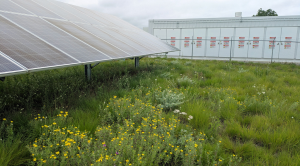
Meeting the climate challenge requires rapid and widespread deployment of clean energy, and distributed energy resources (DERs) are a vital part of that deployment. While DER technologies themselves—such as rooftop solar, community solar, and small storage systems—are increasingly accessible, one of the biggest barriers to broader adoption lies behind the scenes: interconnection.
Interconnection is the process by which energy resources are reviewed and approved to connect to the electric grid to manage grid congestion and reliability. It can be time-consuming, costly, uncertain, and typically varies by state and electric utility service territory. As demand for DERs grows, interconnection challenges often increase due to congestion as more projects seek connection to the grid.
Unlocking the full potential of DERs will require thoughtful reforms that align interconnection processes with today’s rapidly evolving energy landscape. Through our work supporting states, utilities, and stakeholders in developing consensus-based solutions to DER interconnection challenges, we’re exploring many of these reforms and technologies.
Among these is an ongoing exploration of flexible interconnection technology in Connecticut as a solution for faster DER interconnection while minimizing the cost and time for electric grid upgrades.
Flexible interconnection explained
Flexible interconnection, or Flex IX, is an innovative technology that enables DERs to operate in a flexible manner in response to real time grid needs and constraints. Simply put, this means that the power the DERs generate can be managed to not overload the local distribution grid infrastructure when the grid can no longer handle additional energy.
This increased flexibility helps mitigate grid congestion, making it easier for more DERs to interconnect without infrastructure upgrades, even in areas with limited grid capacity, while minimizing costs. For this reason, jurisdictions with clean energy goals are increasingly interested in Flex IX as a potential pathway to facilitate DER interconnection.
Flex IX is typically deployed in accordance with an operating agreement between the DER project owner (e.g., a solar facility) and the utility that owns and operates the local distribution system. Under such an agreement, the DER owner agrees to curtail the DER’s export capacity (i.e., moderate the DER’s output) under high-congestion conditions, but may continue to deliver electricity to the grid during non-congested periods at the DER’s full export capacity.
Connecticut DER Interconnection Work Group
This innovative technology may soon have a significant case study. For several years, we have facilitated Connecticut’s DER Interconnection Work Group in collaboration with the Office of Education, Outreach, and Enforcement (EOE) at the Connecticut Public Utilities Regulatory Authority (PURA). The work group is currently developing a Flex IX program in collaboration with Connecticut’s electric distribution companies (EDCs), to be delivered to PURA for review by March 2026.
The work group’s task is part of a larger effort to address interconnection challenges in the state. Last fall, PURA issued a procedural order in Docket No. 17-12-03-RE06 establishing a “100-day sprint” process for the work group to, within 100 days, find solutions to several interconnection issues, including the following:
- Delays in approval processes and timelines
- Guideline ambiguity
- Hosting capacity constraints
- Communication gaps between parties
- Challenges with the interconnection application process
One of the consensus proposals identified in the work group’s final report recommended that PURA establish a stakeholder process to develop a framework for implementing a Flex IX program to improve interconnection timelines and costs. In March 2025, PURA issued an interim decision directing the state’s EDCs to develop a Flex IX program in collaboration with the working group.
In its decision, PURA established that, “integrating flexible interconnections, such as smart inverters and other emerging technologies, into the Interconnection Guidelines will enhance DER deployment across Connecticut by reducing interconnection upgrade costs and expediting application timelines… [and] could help free up hosting capacity, supporting the state’s clean energy goals and promoting broader DER deployment” (see page 25 of the decision).
Initial model for flexible interconnection
Per PURA’s order, the program must include an implementation framework, details on ratepayer costs, and an evaluation of avoided costs. Specifically, the following elements are identified for inclusion in the proposed Flex IX program (found on page 25 of the interim decision):
- “A proposed definition of flexible interconnection;”
- “Description of any advantages or disadvantages to flexible interconnection;”
- “An overview of any hardware or software investments necessary to enable flexible interconnection, and whether they are considered ‘in front of the meter’ or ‘behind the meter’;”
- “A plan for implementing flexible interconnections across both EDC service territories;”
- “An evaluation of how flexible interconnection might replace system upgrade costs;”
- “A proposal for how flexible interconnections might be reflected in the EDCs’ Integrated Distribution System Plan process and document;”
- “A framework for the EDCs to assess and incorporate flexible interconnection options into system impact studies;”
- “Clean and redlined draft versions of the Interconnection Guidelines integrating the proposed flexible interconnection program;”
- “A proposed implementation timeline;”
- “A breakdown of related ratepayer costs;”
- “Supporting evidence for any EDC costs and timelines; and”
- “A list of areas where consensus was not reached, outlining stakeholder disagreements and the reasons for those disagreements.”
Next steps for the Flex IX program
Connecticut’s first steps in developing a Flex IX program are an opportunity to better understand the technology’s benefits, limitations, and ideal use cases and implement a solution that can better support the interconnection of DERs in a changing energy landscape.
When the EDCs submit their Flex IX framework next spring, grounded in input from the broader Interconnection Work Group, it can serve as a model for states looking to expedite DER deployment and minimize grid upgrade expenses.
As we continue facilitating Connecticut’s DER interconnection work group, we’re committed to supporting a collaborative, transparent process and will share updates as the framework takes shape.
Keep up to date with all GPI news by signing up for our monthly Better Energy newsletter.


